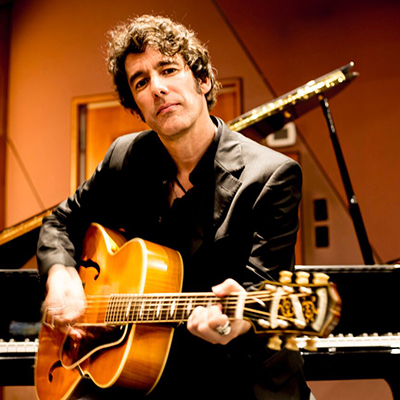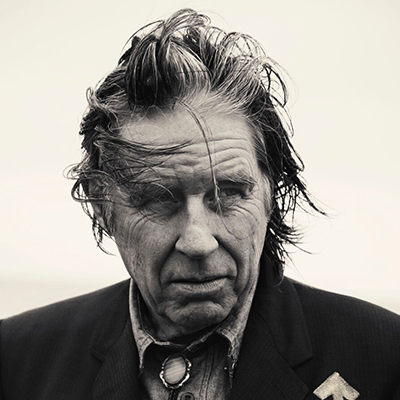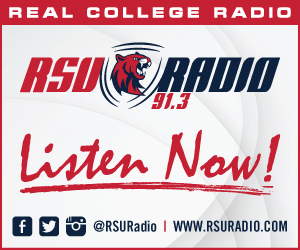Blood on the bootleg
Musicians John Doe and Jeff Slate come to Tulsa for a Dylan celebration near the tracks
Launched in 1991, Bob Dylan’s Bootleg Series is a public gateway into his archives. The new edition released this month, The Bootleg Series Vol. 14: More Blood, More Tracks, might prove to be the most important installment yet.
Consisting of alternate recordings from his beloved release, Blood on the Tracks (1975), the Bob Dylan Center will host a celebration of these formerly illicit recordings at the Woody Guthrie Center on Nov. 17. Musicians and music historians John Doe and Jeff Slate will lead the revelry and perform a set in the Guthrie Center’s intimate performance space after discussing Dylan’s work.
In 1975, Dylan once again redefined contemporary popular music with Blood on the Tracks, a maturing in his long career. The album opens with a return to his familiar folk roots, yet several ballads have a timely seventies sound, and other lengthy epics are reminiscent of the prosaic songs from his “electric” period. You could also describe the album as a complete rejection of the labels—folk, political, electric Judas—by which Dylan had always been pigeonholed. But simply put, Dylan delivers his best lyrically and with a reformed sound. However, as serious Dylan fans know, there was more to Blood than those ten original tracks.
With More Blood, More Tracks, fans will be able to reevaluate the record and experience Dylan’s fabled studio process for the first time. The collection comes in several formats and lengths. The track listing of the original album doesn’t match the new digital release, which doesn’t match those of the standard CD/LP physical release. However, the new 6-CD deluxe edition contains every recording that Dylan made during the legendary six days the album took to record and then re-record, in chronological order. It also includes a hardbound book of beautiful photos, with liner notes written by Slate.
 “If you can forget everything you know about Blood on the Tracks and go into this fresh, you’re gonna be surprised at what you learn by hearing the songs and looking at his notebook and just consuming that and letting yourself make your own conclusions,” Slate said.
“If you can forget everything you know about Blood on the Tracks and go into this fresh, you’re gonna be surprised at what you learn by hearing the songs and looking at his notebook and just consuming that and letting yourself make your own conclusions,” Slate said.
The greatest difference between the original album and alternate cuts, other than their remastering, is that the selected bootlegs (on the 10-track digital edition) covey a softer, more sincere, and personal tone than the tracks selected in ‘75. Michael Chaiken, curator of the Bob Dylan Archives in Tulsa, said the original album was also pitched up a half-step in post-production by sound engineers at Columbia. These differences are most apparent on outtakes like “Idiot Wind – Take 6,” which is even more listenable than the album version.
Slate first saw Dylan live during the “True Confessions” tour with Tom Petty and the Heartbreakers. Slate was in college at the time. This period is not only important to him personally, it’s an understudied moment of Dylan’s career.
 John Doe, co-founder of the Los Angeles punk band, X, will elucidate Blood on the Tracks and its bootleg alongside his friend Slate at the Nov. 17 event. His first encounter with Dylan was quite different from Slate’s.
John Doe, co-founder of the Los Angeles punk band, X, will elucidate Blood on the Tracks and its bootleg alongside his friend Slate at the Nov. 17 event. His first encounter with Dylan was quite different from Slate’s.
“The first time I met Bob was in a hotel room after [X] had played in Minneapolis, I think it was ’81,” he said. “Exene [Cervenka] and I had just visited her dad up in northern New York and went fishing, and so I said, meeting Bob for the first time: ‘So what have you been doing?’ and he said, ‘Well I’ve been fishing,’ and I said: ‘Yeah, really? Me too.’ So, we talked about fishing for about 45 minutes.”
Doe sees a clear relationship between the forms of folk and punk music. “It’s a music for the people that you live with,” he said. “So, if that’s your community then you write songs about that community. The simplicity of punk music, or folk music, that’s at the root of what it was trying to do. It wasn’t about virtuosity—even though there can be moments of that—it was just about getting a feeling out and it being authentic and true. Telling the truth, so that’s where the biggest similarity comes from.”
The truth in Dylan’s music certainly carries over to Doe’s writing and recording with X, who had their own exhibit earlier this year at The Woody Guthrie Center. “I’d say the story part—the beginning, middle, and end—that’s what I try to use from what he’s done,” Doe said.
The Bob Dylan Archive in Tulsa will allow the Dylan community to tread new ground in terms of research. As Doe says, we shouldn’t see Dylan’s career as fixed, because artistically, it never was.
Housed in the collections of the Morgan Library in NYC—and reproduced in the book included with the More Blood deluxe edition—Dylan’s famous red notebook contains working drafts of the songs you hear on the record. (See Slate’s latest piece in The New Yorker for more on this.) Two notebooks held at the Bob Dylan Archive precede this, filled with earlier drafts of the songs that crystalized on the album, and fill the session tapes.
“We’ve got a blue notebook that appears to be the very first iteration of all the songs on Blood on the Tracks,” Chaiken said. “It includes a version of ‘Tangled up in Blue’ that’s something like thirteen pages long. Much different than what ultimately ended up on the record.”
Slate elaborated on Dylan’s process and redefining his art with his celebrated 1975 album: “He’s thinking—‘How can I take Cubism and put it into a four-minute pop song?’” It was a far cry from what other musicians of the period were doing, or for that matter, what anyone has done since.
An Evening with Jeff Slate & John Doe
Sat., Nov. 17, 7-9 P.M.
Woody Guthrie Center
102 E. M.B. Brady St.
Advance tickets are available for $20 by calling: (918) 574-2710 or at the Woody Guthrie Center.


.jpg)
.jpg)
